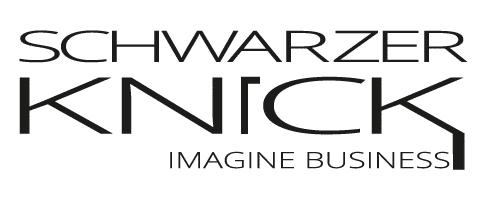SEO optimization vs. AIO optimization – why switch now and benefit twice
Short answer:
SEO ensures rankings in classic search results.
AIO optimization (Artificial Intelligence Optimization) structures content so that
AI systems understand, summarize and cite them.
Combining both = visibility in organic results, AI overviews, chat responses and Google Maps.
What SEO optimization achieves today
SEO is the foundation:
-
On-page: clear H1–H3, precise titles & meta descriptions, internal linking, alt texts.
-
Technology: fast loading times/Core Web Vitals, mobile-friendliness, indexable pages, clean URL structure.
-
Content : search intent-specific, helpful, up-to-date; real problem-solving instead of keyword stuffing.
-
Off-page: relevant mentions/backlinks, industry directories, trust signals.
-
Local: maintained Google Business Profile (GBP), consistent NAP data, reviews.
Why this matters: Without this foundation, sustainable visibility cannot be achieved – and AI systems also find and evaluate content less effectively.
AIO optimization: Making content “AI-understandable” and citable
AIO extends SEO with everything that favors answers in AI Overviews, Assistants, and Chat Search :
-
Answer formats: short, correct answers (60–120 words), FAQ blocks , lists, tables, “if-then” logic.
-
Structured data ( Schema.org ):
Article,FAQPage,LocalBusiness,Service,Product– machine-readable facts instead of just continuous text. -
Entities & EEAT visible: Author/Company, Qualifications, Contact, Reviews, News Notes.
-
Local AI signals: precise service descriptions, service radius, opening hours, real reviews; answers to price/time questions.
-
Zero-click tactic: offer value even without a click (phone, route, appointment button) – and get qualified clicks with strong snippets.
SEO vs. AIO in plain language (comparison)
| aspect | SEO optimization | AIO optimization |
|---|---|---|
| Goal | Ranking in organic & local results | Selection as a source in AI answers/overviews |
| Content format | Guide + service pages | Answer snippets , FAQ, tables, how-tos |
| Technology | Crawlable, CWV, internal links | Schema markups , clear entities, data points |
| KPIs | Positions, CTR, organic traffic | Visibility in overviews , quoted passages, leads/calls |
| Local | GBP, NAP, reviews, local links | Additional signals : service radius, structured offers/services |
Practical example (Rhine-Main, generalized)
Example – “Heat pump maintenance Frankfurt”
-
SEO base: Service page with symptoms/error codes, appointment CTA, reviews.
-
AIO Boost: “If-then” checklist (filter, pressure, noise), how-to diagram , decision table “check yourself vs. call a technician”, structured marking of emergency telephone number.
Effect: Better integration into AI overviews and maps context, more qualified queries.
90-day plan: immediately implementable
Phase 1 – Foundation (Weeks 1–3)
-
Sharpen the title/meta, align H1–H3 consistently with search intent .
-
Optimize Core Web Vitals (image compression, lazy loading, CSS/JS cleanup).
-
Internal linking: Service cluster + “Read more”/“Next step”.
Phase 2 – Responsiveness (Weeks 4–8)
-
Answer 5–8 real customer questions per service page (60–120 words).
-
Tables/checklists (price ranges, process, comparison old/new).
-
Schema rollout:
Article+FAQPage+ depending on the pageService/LocalBusiness.
Phase 3 – Local & Reputation (Weeks 9–12)
-
GBP: Categories/Services/Q&A, new photos, weekly posts.
-
Review program: request reviews after project completion; respond to reviews.
-
Mini-case per month: initial situation → measures → result (time, costs, benefits).
Tracking
-
Classic: rankings, CTR, organic traffic, conversions.
-
AI-related: Visibility in overviews/summaries, clicks on FAQ/schema pages, calls from GBP.
Common mistakes (and better alternatives)
-
Mistake: Keyword stuffing without real added value.
Better: definition + 3–5 steps + mini-table. -
Error: Schema only in blog.
Better: first service/local pages withService/LocalBusiness/FAQPage. -
Error: only prices “on request”.
Better: State ranges + influencing factors (material, effort, distance). -
Error: GBP unattended.
Better: Maintain Q&A, respond to reviews, seasonal posts.
Checklist: Check AIO-Ready in 10 Minutes
Is there a concise main answer per page (60–120 words)?
Is there an FAQ with 5–8 real questions?
Are schema markups (Article/FAQ/LocalBusiness/Service) correctly included?
Are contact/location/times machine-readable?
Are there tables/checklists (prices, process)?
Are reviews actively collected and integrated?
Is the internal linking correct (clusters, next-step CTA)?
Conclusion & Call-to-Action
SEO remains indispensable. AIO makes content citable for AI responses – and ensures that brands are present in organic and generative results.
Recommendation: Stabilize the foundation, supplement answers and schema, strengthen local signals – measure, readjust, scale.
👉 Request a free SEO/AIO analysis – technical audit, response potential, schema gaps & local visibility check. Result: a concrete 90-day plan with priorities and effort estimates.
